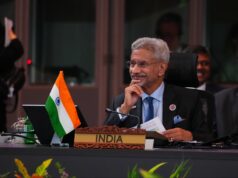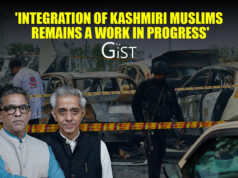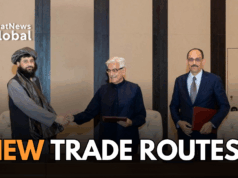Ambassador Gautam Mukhopadhaya, one of India’s finest diplomats, has served as India’s envoy to hotspots like Afghanistan, Syria and Myanmar. Apart from the conventional political and diplomatic assignments which took him around the world, his expertise and experience covers diverse domains like culture, human rights, social development, media, defence and security.
Asked whether India’s attempts to reach out its neighbours through various regional policies (like Act East and Neighbourhood First) and groupings (like the Bay of Bengal Initiative for Multisectoral Technical and Economic Cooperation, or BIMSTEC, the Bangladesh, Bhutan, India, and Nepal or BBIN, etc) and others were floundering because the Chinese could deliver infrastructure projects much faster, he said that while one could say there is a performance deficit in India’s connectivity projects, that is not the only problem.
In Afghanistan, for instance, India worked under extremely difficult and complex political circumstances, to complete The 215 Delaram–Zaranj Highway, also known as Route 606, at a time when the Taliban was making a comeback to Afghanistan around 2007-8. But in the case Myanmar, around the time India started the ambitious Kaladan multimodal project, which aims to connect Kolkata port with Sitwe port on Myanmar’s Rahkine coast, and then go northward by river and road all the way upto India’s northeastern state of Mizoram.
This would not only save time, it would also cut India’s dependence on the Chicken Neck corridor to reach the northeastern states. But then the Rohingya issue came up to complicate things. Then there’s the India-Myanmar-Thailand Trilateral Highway Project, a proposed road link which begins in Moreh in India’s Manipur state, and then goes through Myanmar to end at Mae Sot in Thailand. Since 2021, extreme political instability in Myanmar has essentially brought it to a standstill. The Thais have completed their section of the highway, but today, it is being used for military operations.
The other problem plaguing connectivity, he said, is perhaps a lack of a holistic approach, which examines how these connectivity projects would “actually be leveraged, the kind of industries that we hope to build or tap along the way, and the commercial activities involved…” We don’t seem to have the mechanism in place which links the connectivity track, the business track and the strategic track together as yet, he felt.
Also, it is not always India’s fault. For instance, Bhutan pulled out from the Bangladesh-Bhutan-India-Nepal (BBIN) Motor Vehicles Agreement after having signed it, ostensibly because it would impact their plan to be a carbon neutral nation. So they had signed up, and then had second thoughts.
Returning to the Chinese, they have a way of doing things, which we don’t necessarily need to emulate, he said. They may not have the checks and guards that we have, and they see many of these as strategic projects and invest accordingly, driven from the top.
However, India might want to consider tweaking the tendering process of at least certain strategic projects to incentivise timely delivery, and focus not just on cost but on other parameters too, he said .
One of the signs of this lacunae in thinking can be seen in the fact that while there is a integrated checkpost at Moreh which has an immigration desk, there is no customs desk there. So trade is limited to the standard limited barter system that has been there right from independence.
How is India’s Act East policy different from the Look East policy initiated by Prime Minister PV Narasimha Rao? Does India’s attempt to connect with the Far East depend totally on the situation in Myanmar? And if that is the case, should we continue to focus totally on marine connectivity along the coastline and put the whole network of inland highways and waterways connecting our region on the back burner?
To get the answers to these questions and more, as well as fascinating insights into how things work (or don’t) when it comes to regional connectivity, and the various opportunities and challenges involved, watch the entire interview.
In a career spanning three decades and counting, Ramananda (Ram to his friends) has been the foreign editor of The Telegraph, Outlook Magazine and the New Indian Express. He helped set up rediff.com’s editorial operations in San Jose and New York, helmed sify.com, and was the founder editor of India.com.
His work has featured in national and international publications like the Al Jazeera Centre for Studies, Global Times and Ashahi Shimbun. But his one constant over all these years, he says, has been the attempt to understand rising India’s place in the world.
He can rustle up a mean salad, his oil-less pepper chicken is to die for, and all it takes is some beer and rhythm and blues to rock his soul.
Talk to him about foreign and strategic affairs, media, South Asia, China, and of course India.




